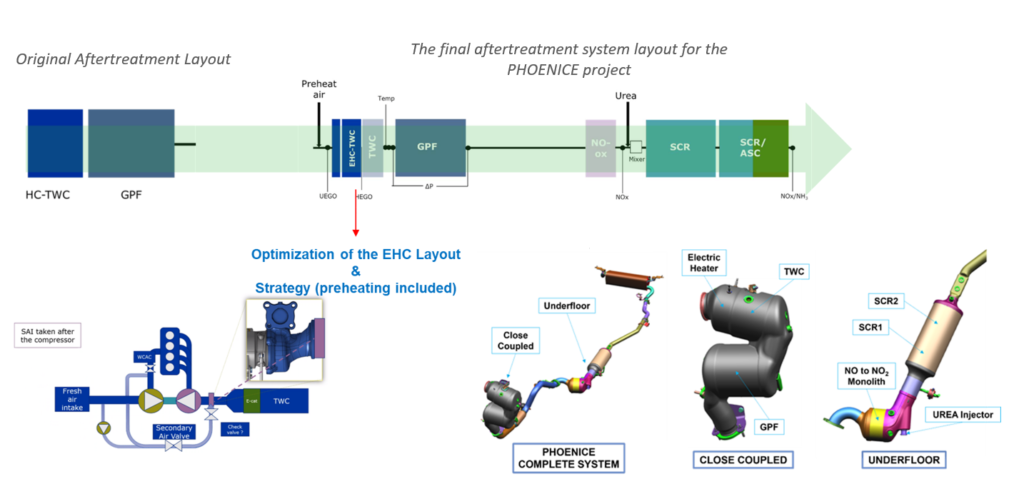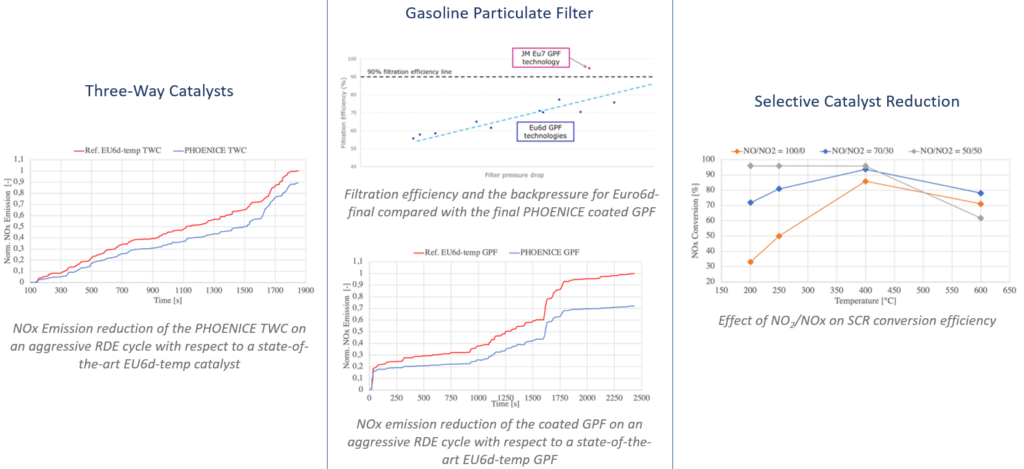
The PHOENICE EATS comprises two sections: a close-coupled section, primarily designed to control gaseous emissions under cold-start and stoichiometric (λ=1) conditions, as well as particulate matter, and an underfloor section, which is necessary for NOx conversion under lean conditions and to reduce the concentration of additional pollutants such as ammonia.
The results of exhaust after-treatment bricks development demonstrated the improvement in the performance of the selected Three-Way Catalysts technology against the previous best-in-class reference. A 10% improvement in NOx performance is achieved after the first 100 seconds when the catalyst is fully lit off.
To meet the project’s demanding Particle Number (PN) emissions objective, JM used the most recent GPF coating technology, specifically designed for Euro7 applications, to deliver a significant gain in filtration efficiency over the current Euro6d-level technologies, though without impact on backpressure. The GPF coating also enables NOx emission reduction. The results of this new GPF technology are shown in the figures in the middle.
Finally, The NO-Ox is designed to maximize the NOx conversion efficiency of the SCR by increasing the NO2/NOx ratio in the exhaust gas stream. Experiments have demonstrated the importance of the NO2/NOx ratio on the NOx conversion efficiency, as illustrated in the figure on the right.


